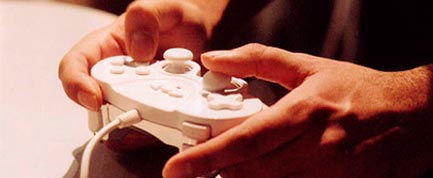Video Games Help Astronauts Prepare for Deep-Space Missions

Venturing into deep space is an unprecedented challenge for humanity, both in terms of technology and human psychology. Starting this week, six people will prepare to face that challenge with the help of three video games.
As part of the European Space Agency's (ESA) preparations for future missions to Mars and beyond, six astronauts are entering an isolation unit in Moscow this week. They'll remain there for 520 days, testing hardware, software and their own responses to being in such close quarters for more than a year.
In the process, ESA researchers hope to refine "e-partners," or electronic systems that will monitor human crew and assist in the event of an emergency. That's where the video games come in.
In a deep-space mission, "the teams are out there alone," Mikael Wolff of ESA's Software Systems Division told TechNewsDaily. "We want to improve the communication between them and the electronic agents."
To do so, the team developed three games for the astronauts to play on a biweekly basis. The first is a module that will simulate the kind of on-the-job training astronauts will need to refresh their knowledge during long missions. In this module, the astronauts work in groups of three, with one as the teacher and two as the students.
The next game is a social networking activity in which the astronauts have to work together to move around on-screen colored trails. By monitoring the astronauts' cooperative behaviors, the researchers hope to learn how individual team members interact and whether those interactions change over time. These group dynamics are important in a high-pressured, isolated environment, said Mark Neerincx of the Netherlands Organization for Applied Scientific Research, who is overseeing the project.
"One important question in this situation is whether we can generalize [the game] to normal operations and whether we see specific patterns in their communications with each other," Neerincx said.
Get the world’s most fascinating discoveries delivered straight to your inbox.
Finally, the astronauts will get a chance to relax by playing a lunar landing game. The hope is that leisure-time gaming will boost the astronauts' moods, Wolff said.
The astronauts will fill out questionnaires about their emotions and moods before and after all of the games, and their game performance will be recorded. They'll also be monitored by Web cam to test how well crews on the ground can gauge the emotions of the crew in space.
Unlike current space missions, where ground control and astronauts are in near-constant communication, deep space exploration will take astronauts far outside the realm of easy contact. Signals will take hours to reach Earth, Neerincx said, so astronauts have to be able to solve problems on their own. To do so, they'll need software that's easy to use, supportive and responsive to changing situations.
The software being tested has already gone through one 105-day isolation trial, said Wolff. Using data from that study, researchers were able to improve their communications network and add more realistic tasks to their modules. This time around, they hope to gather enough data from the training module to automate the system so that the computer would do the training without a human instructor. They also hope to monitor the astronaut's performance to better understand how to allocate the day-to-day tasks of running a deep-space mission.
Next year, the team hopes to take the experiments one step further by re-testing the software at Europe's Concordia base in the Antarctic, where astronauts will be asked to carry out real scientific tasks, not just simulations. Eventually, they hope to test the system on the International Space Station.
"Our experiments mainly look very similar, but the people are going to be in another environment," Wolff said. "The results may be different."

Stephanie Pappas is a contributing writer for Live Science, covering topics ranging from geoscience to archaeology to the human brain and behavior. She was previously a senior writer for Live Science but is now a freelancer based in Denver, Colorado, and regularly contributes to Scientific American and The Monitor, the monthly magazine of the American Psychological Association. Stephanie received a bachelor's degree in psychology from the University of South Carolina and a graduate certificate in science communication from the University of California, Santa Cruz.


